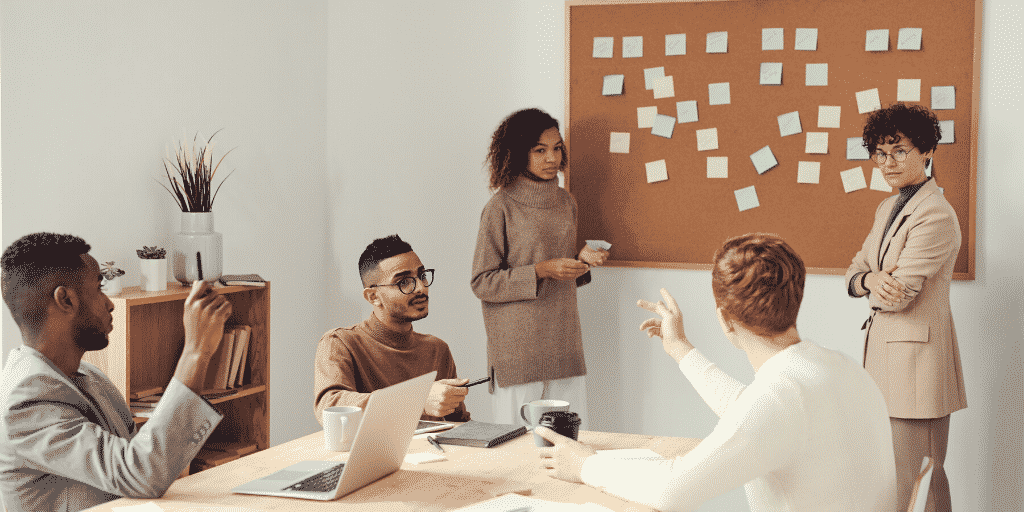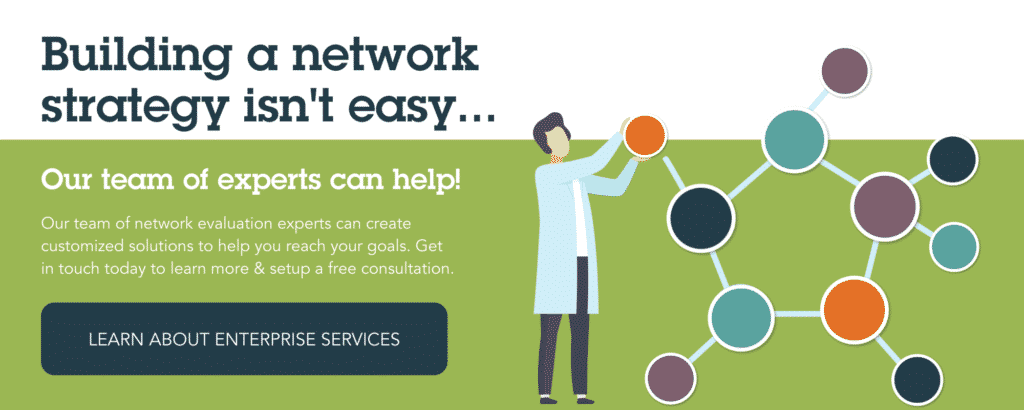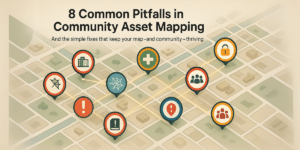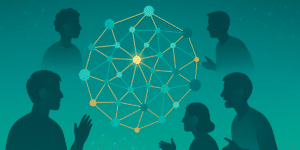Four Tips to Facilitate a Great Network Gathering

In September 2018, Visible Network Labs hosted its first ever two-day Network Leadership Workshop: How to Lead, Manage, and Problem Solve in Cross-Sector Community Network. As a spin off from our flagship training program, the annual three-day Network Leadership Training Academy, this more intimate workshop of over 20 participants focused on how to develop strategies, techniques, and action plans for more effectively managing their network. During the planning process, VNL staff and our facilitators identified activities, based on participant feedback, that would encourage peer-learning, thoughtful reflection, and practical tactics that participants could apply when they returned home.
What I’d like to share are four facilitation techniques that were a hit at our fall training that you can use with your next network (or organization’s) meeting or training to foster those a-ha moments and stronger connections among your colleagues. A big shout out to our wonderful facilitators (Paige Backlund Jarquín, Pam Coleman, Lisa VanRaemdonck, and Danielle Varda) for sharing their time, experience, and these great activities.
HONE IN ON YOUR MATCHMAKING SKILLS
I’ve always been a matchmaker of sorts-I love connecting people with similar interests or to resources or events that might support the work they do. As part of our registration form, we asked participants to share the field they work in, level of experience managing a network (you can adapt this to # of years participating in your network), and to describe their network’s purpose, their role, and challenges they face.
With several people attending as part of a team, we wanted to ensure they had the opportunity to talk with new people from similar backgrounds and to encourage peer-learning at their tables. With this in mind, I put my matchmaking skills to test and on the first day assigned people to sit at tables that 1) didn’t know each other; 2) worked in similar areas; and 3) had varying experience levels managing a network.
Sure this took more preparation time than letting people seat themselves, however, the reward was seeing new relationships and synergy blossom that might not have otherwise. By sitting at a table with people they didn’t know, they could also be more open and honest about their struggles. Or as one participant put it, which became a reoccurring theme during the workshop, “speak her truth.”
Within your own network where people may know each other already, do a little matchmaking yourself. Before your next meeting, think about who always sits together or knows each other well and switch people up.
If you have nametags, put a colored sticker on it and group people by color.
Or get a set of playing cards and distribute the same suit or number to those you want to sit together.
You can take it one step further and put some icebreaker questions on the table to get conversations started. A few ideas: where you grew up, a unique talent, or one item on your bucket list.
Coming Prepared to Tackle Your Problems
The primary aim of our workshop was providing a space for people to identify and work through a challenge they face with their network. So we could hit the ground running, we asked participants to fill out a worksheet with the following questions about their network’s background and their problem statement before coming. We then used this worksheet and the problem statement in other activities throughout the workshop.
What is your network’s purpose and goals? We alsoi included mad-lib type sentences to help develop a theory of change statement:
o As a network, I/we believe that by [ACTIVITY], our work will lead to [GOAL], which will benefit [STAKEHOLDER OR POPULATION OR ISSUE AREA].
o Our network is organizing [WHO] to do [WHAT-a measurable aim] by [HOW — tactics] because [WHY — motivating vision] by [WHEN—timeline].
How would you describe your role in your network? Who are the network’s members and other key stakeholders?
Please develop a 2-3 sentence statement that describes a problem within your network that you will work through during the workshop.
We asked each person to fill it out individually even if they were part of the same network/organization. What is one person’s struggle may not even be on the radar for another and it was an interesting checkpoint to see how everyone views the network’s purpose, goals, and stakeholders. Similar responses could mean everyone is on the same page, while different answers may indicate diversity of perspectives within the network or a red flag of disconnection between members. As facilitators, this was so helpful in developing the content and activities for the workshop. You can download the worksheet here.
Leveraging the Wisdom in the Room
When we find ourselves facing challenges in our network, seeing a way forward can be daunting- perhaps it is hard to find the time or someone to talk to about how to overcome it. With these things in mind, we had participants use the Troika Consulting activity to gain insights on their challenges through rapid rounds of peer-to peer consulting. Here is a quick rundown of the activity- you can find more details on this website.
1. In groups of three, one person is the “client” and the others are “consultants.” Each person has the chance to give & receive peer-coaching.
2. Ask people to think of the challenge they need help with. We had people reflect on their collaborative facilitation style (or lack of!)
3. The first client shares his/her question (1-2 min.)
4. The two other consultants ask the client clarifying questions (1-2 min.)
beautiful-connection-education-1181233.jpg
5. The client turns so his/her back is facing the consultants.
6. The consultants come up with ideas and suggestions (4-5 min).
7. The client turns back around and shares takeaways or what was most valuable about the experience (1-2 min).
8. Switch to the next person in the group to be a client and repeat the steps.
This simple yet powerful activity uncovered many a-ha moments about the “clients” own issues and for “consultants”- the realization that they have an abundance of wisdom and useful suggestions to offer. This is a great activity to use in your own network or organizational meetings. To close out the activity, participants reflected on the questions below about their collaborative facilitation style. While it may be easy to think challenges are the result of other people or things in our network, we need to also reflect on how we may be contributing to problems as well.
What are my facilitation strengths?
What are my concerns about my facilitation style?
What do I need to do more of?
What do I need to do less of?
What are three steps I will take over the next few weeks to enhance my collaborative facilitation within my network?
Reflection, Process Learning & Next Steps
Some of the key elements of our workshop were process learning, time for reflection, and developing action steps.
At the end of the workshop, participants engaged in a reflective brainstorming session that brought together the ideas sparked, skills developed, and tools practiced to outline next steps to implement in their network when returning home. In either small groups or individually, participants thought about and discussed the following.
Individual Reflection:
What have I learned and has my problem statement changed? If so, how?
What new issues were uncovered?
Next Steps Planning:
What are my/our next steps? (using very clear action language- who, when, what, identify tactics)
Who is best suited to move these next steps forward? Also, be clear about what you are capable of doing and where you might need to delegate.
What is still needed and how will I get it? (data, knowledge, support, etc).
Reflecting on YOU & Engaging Your Network:
What is a priority (for me, for my network)? Why?
What is my motivation to act on this? What am I most excited about-where do I want to put my energy?
What needs to happen to engage the rest of the network in this work? What is my role in this-what do I need to change about myself to move this forward?
How will I share what I’ve learned with others?
This two-day Network Leadership Workshop was a bit of an experiment for Visible Network Labs. We brought together four facilitators that had been training speakers for us before, but never at this level, to collaboratively plan, develop content, and facilitate the workshop. What we realized is how well we worked together and the positive response from participants encouraged us to keep offering these smaller scale, peer-learning focused trainings. A big thank you to our wonderful participants for going along with us for the ride-we learned just as much from you and we are so excited to keep expanding this community of network leaders!






